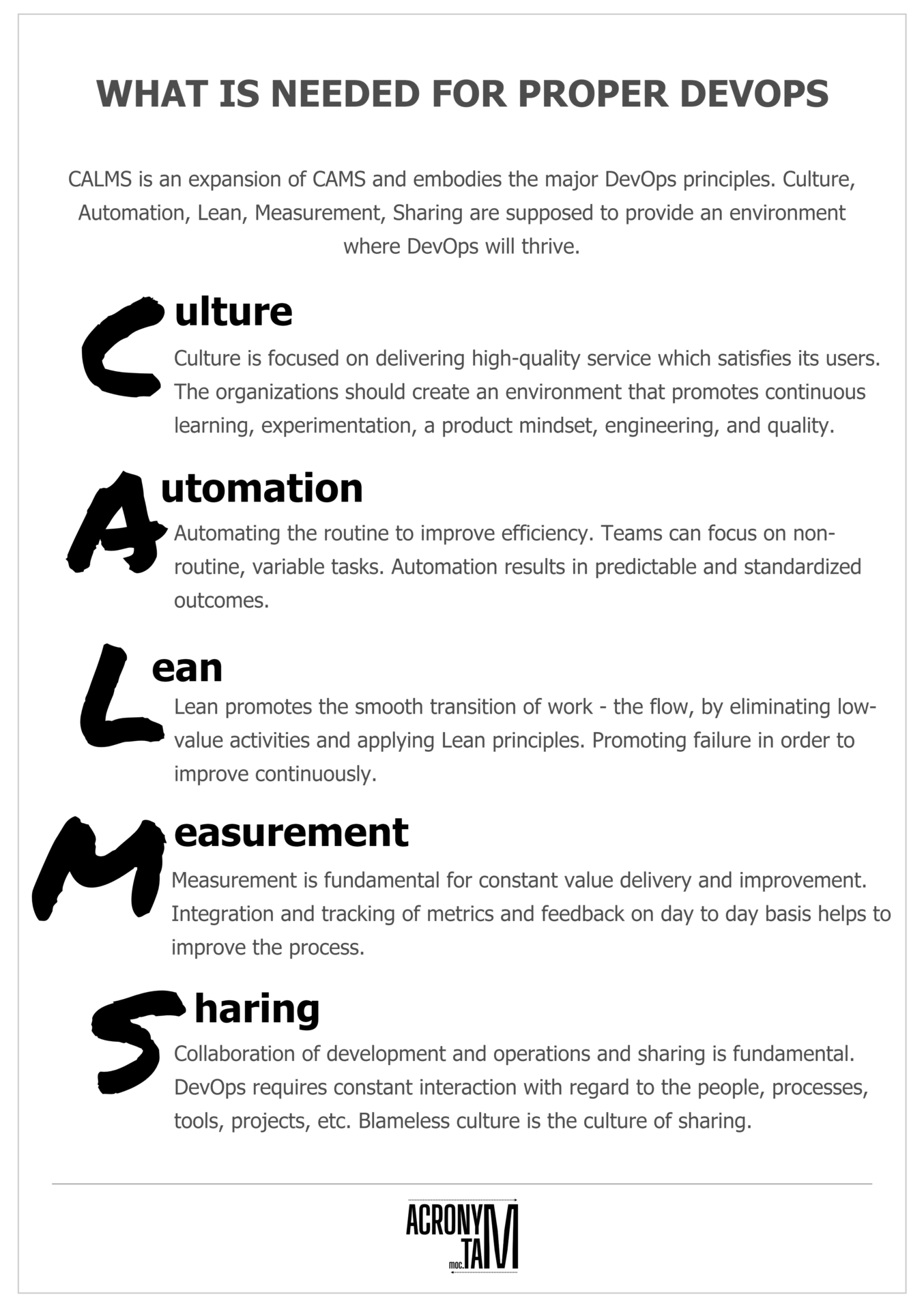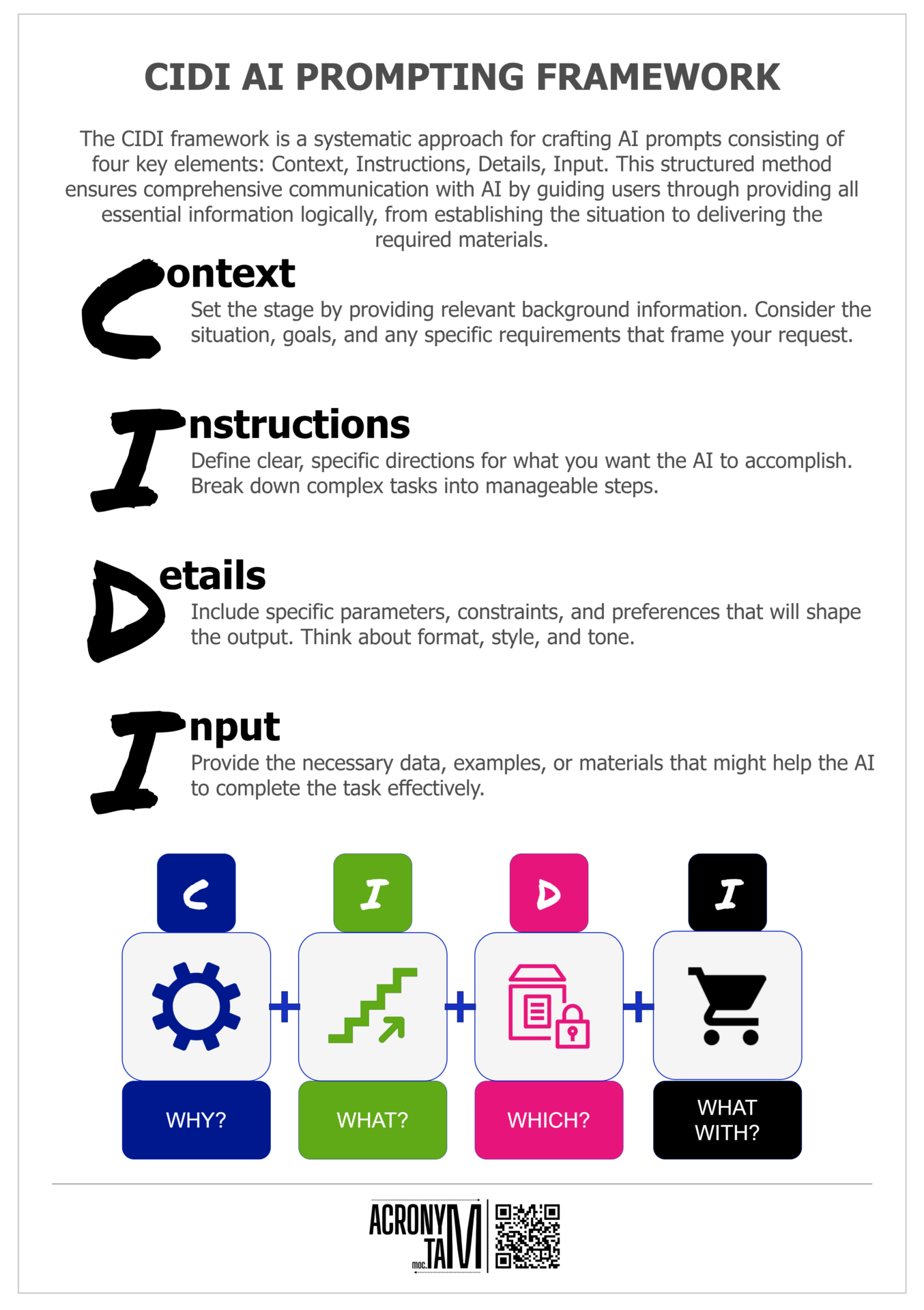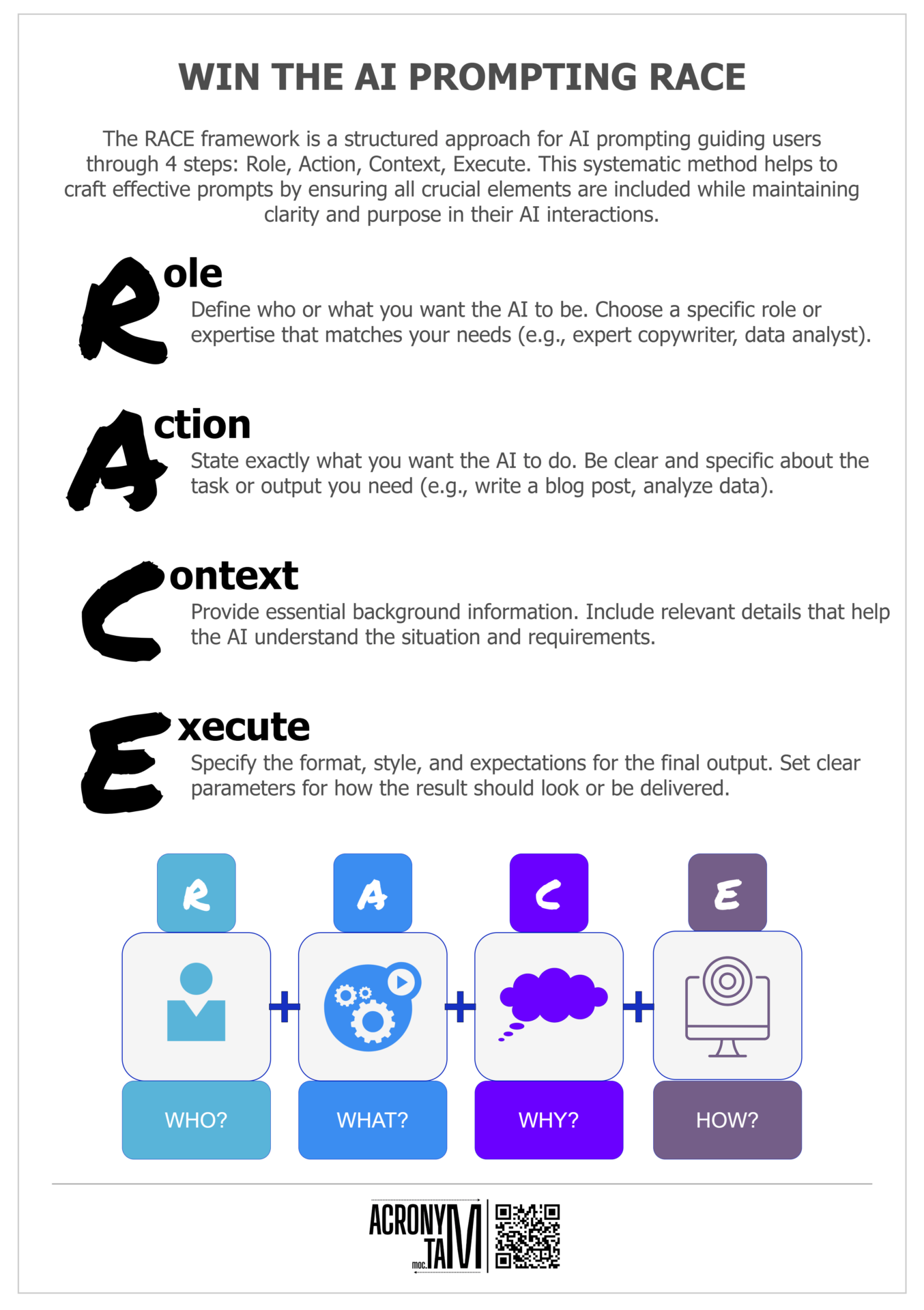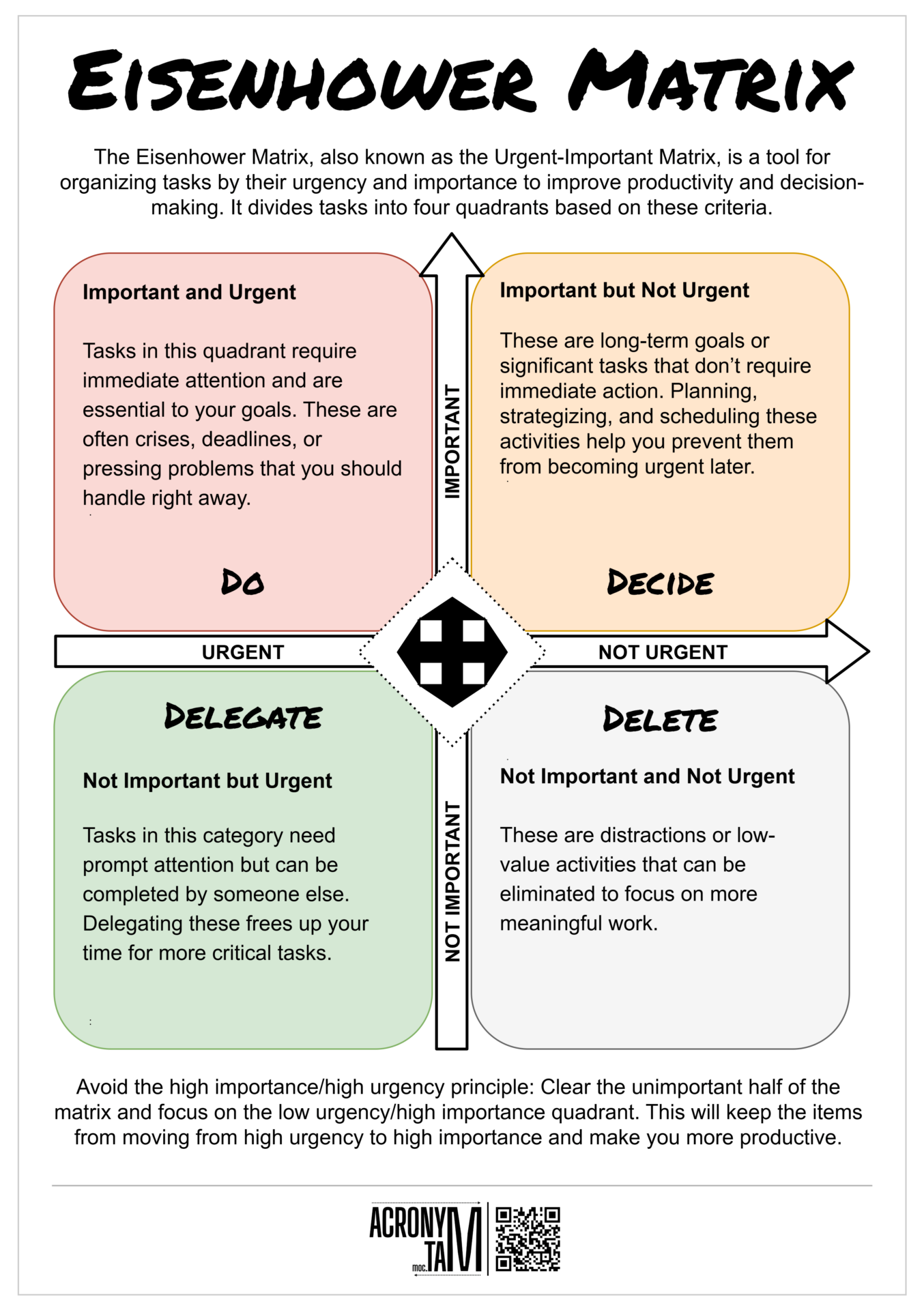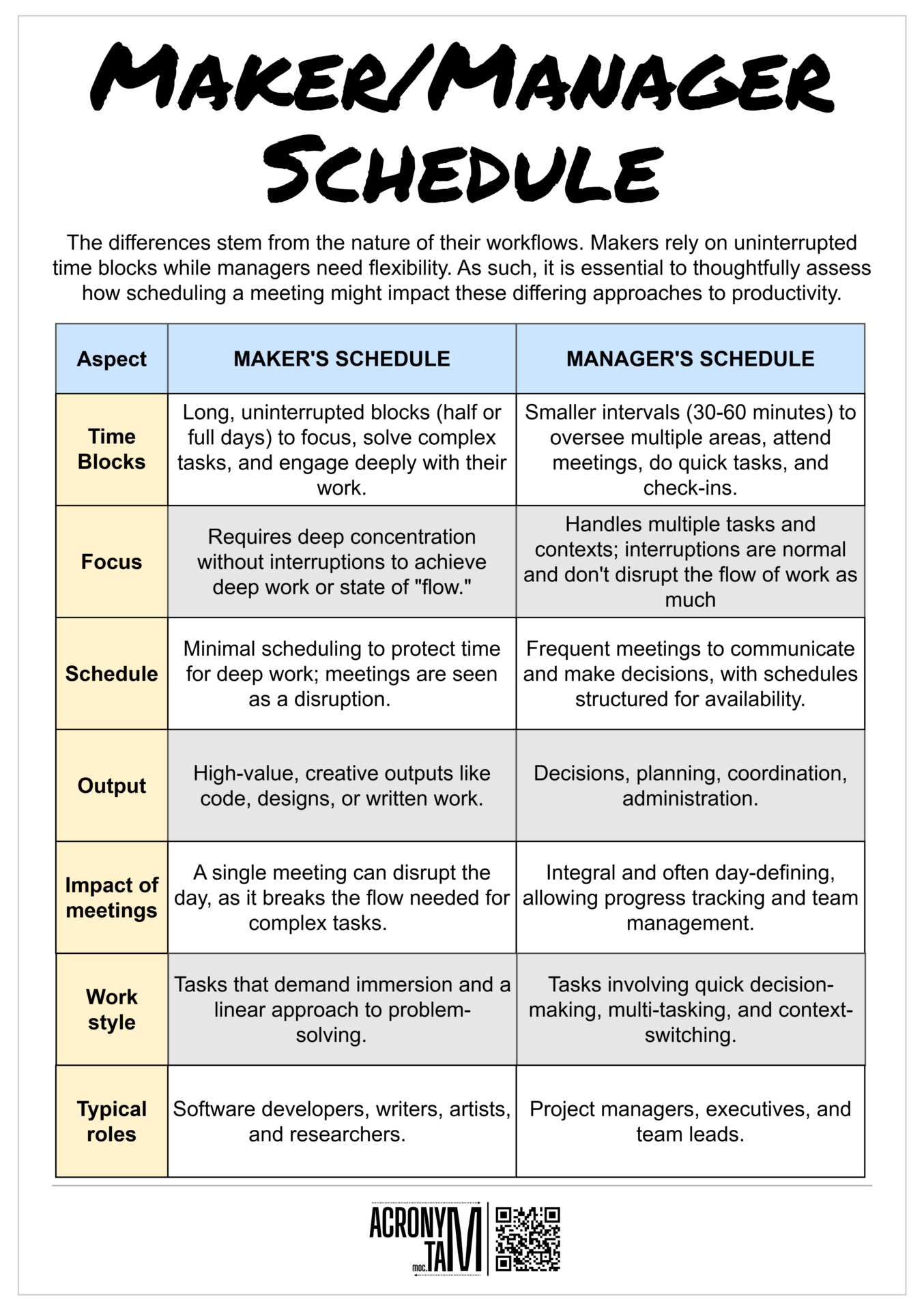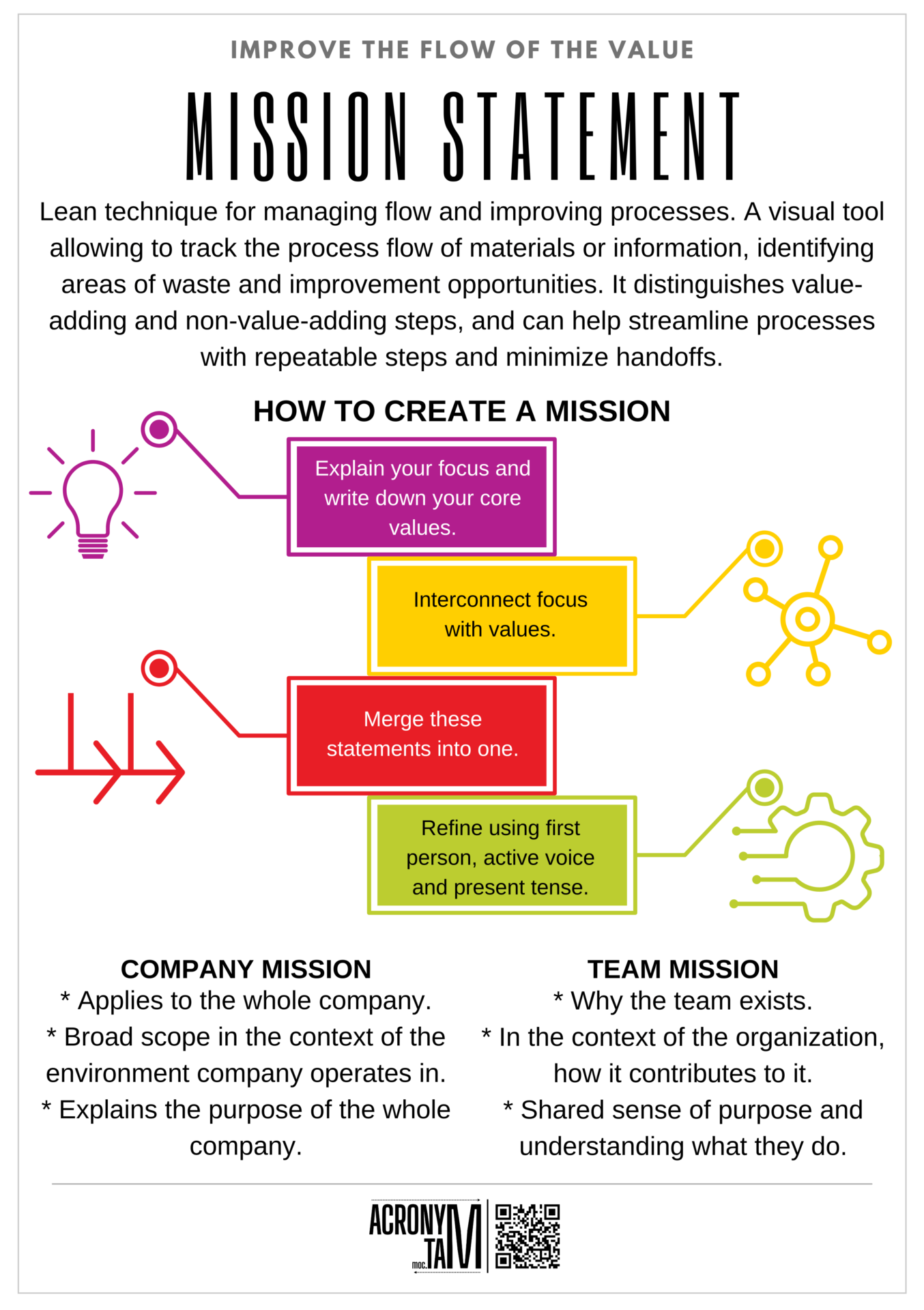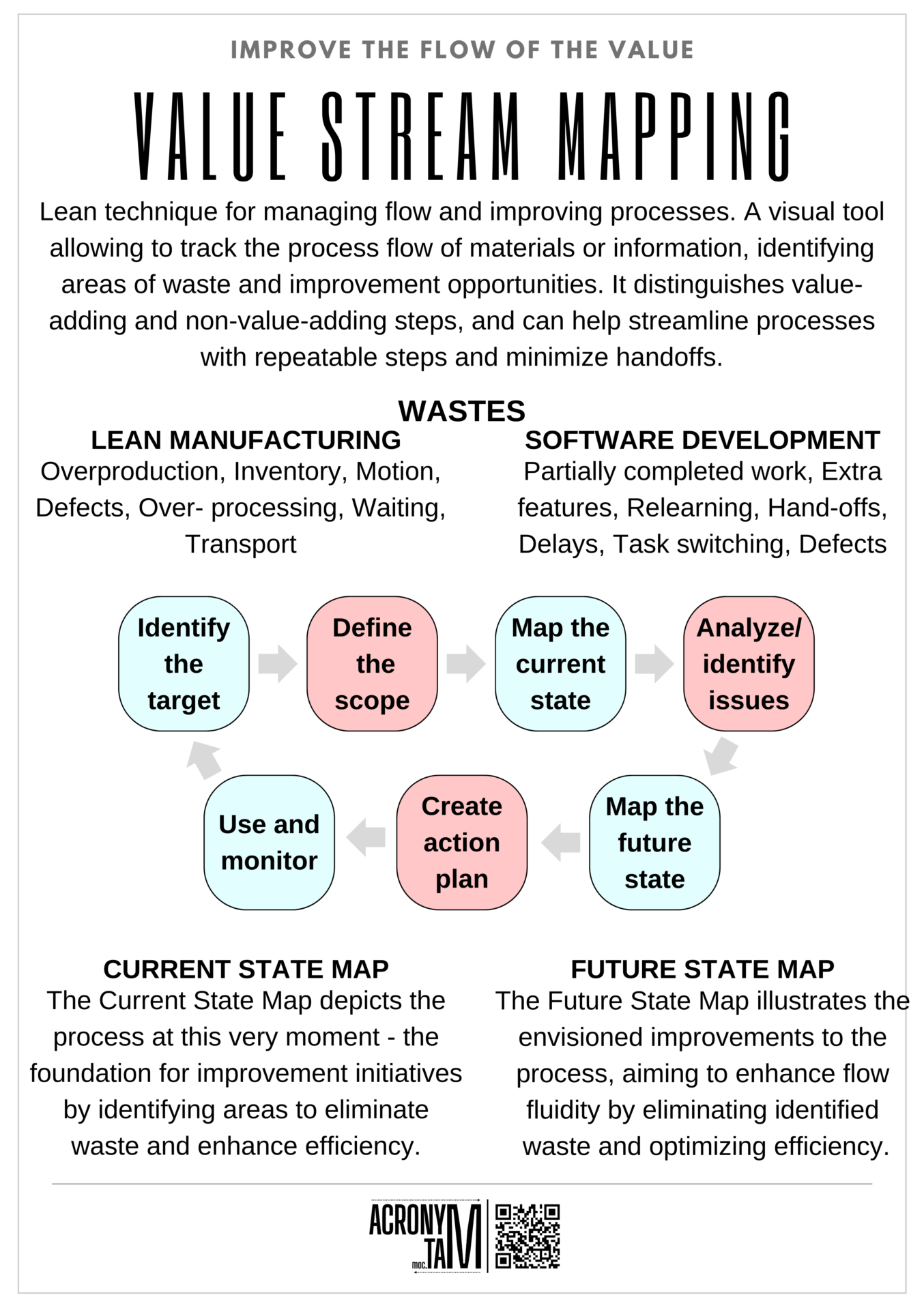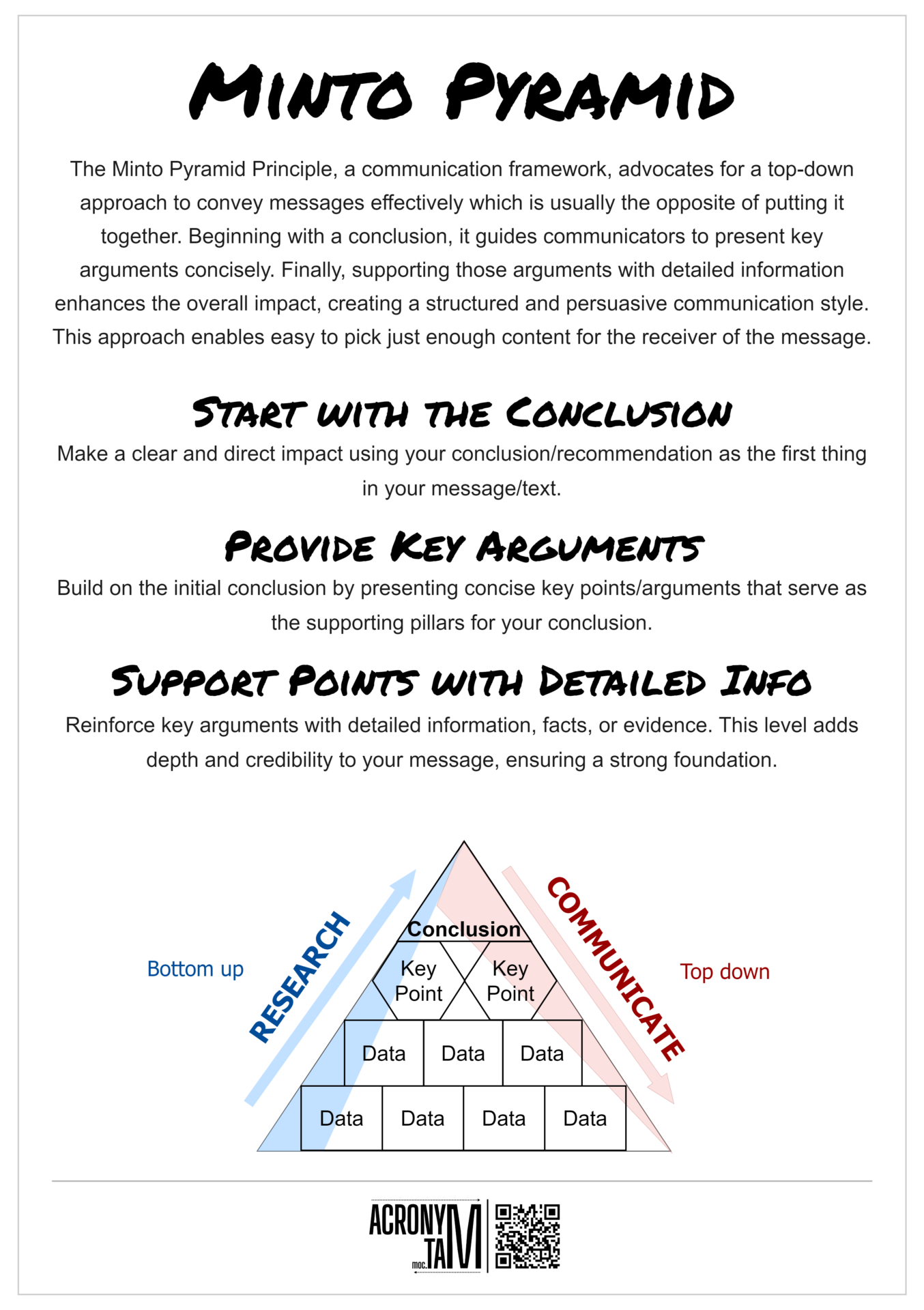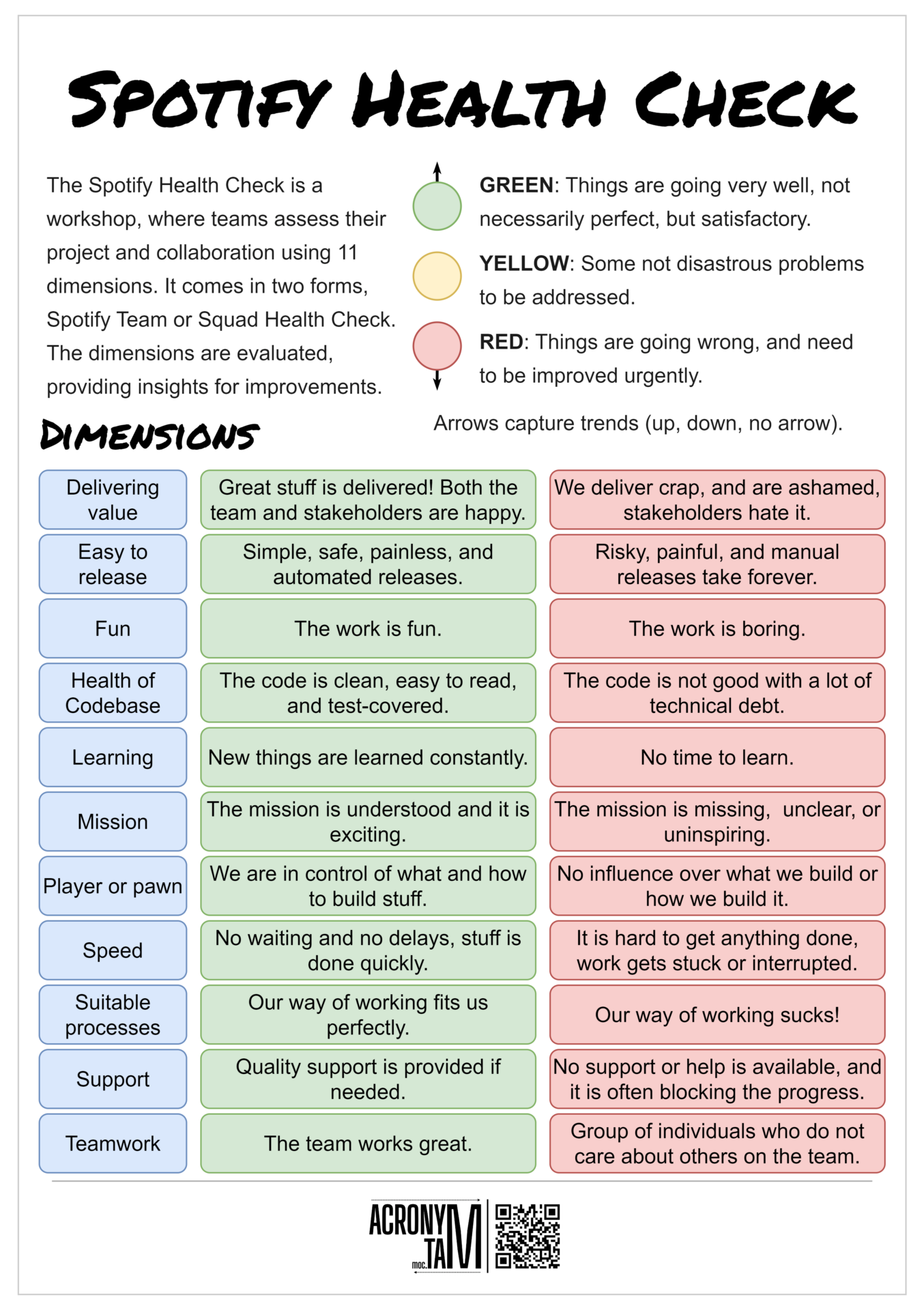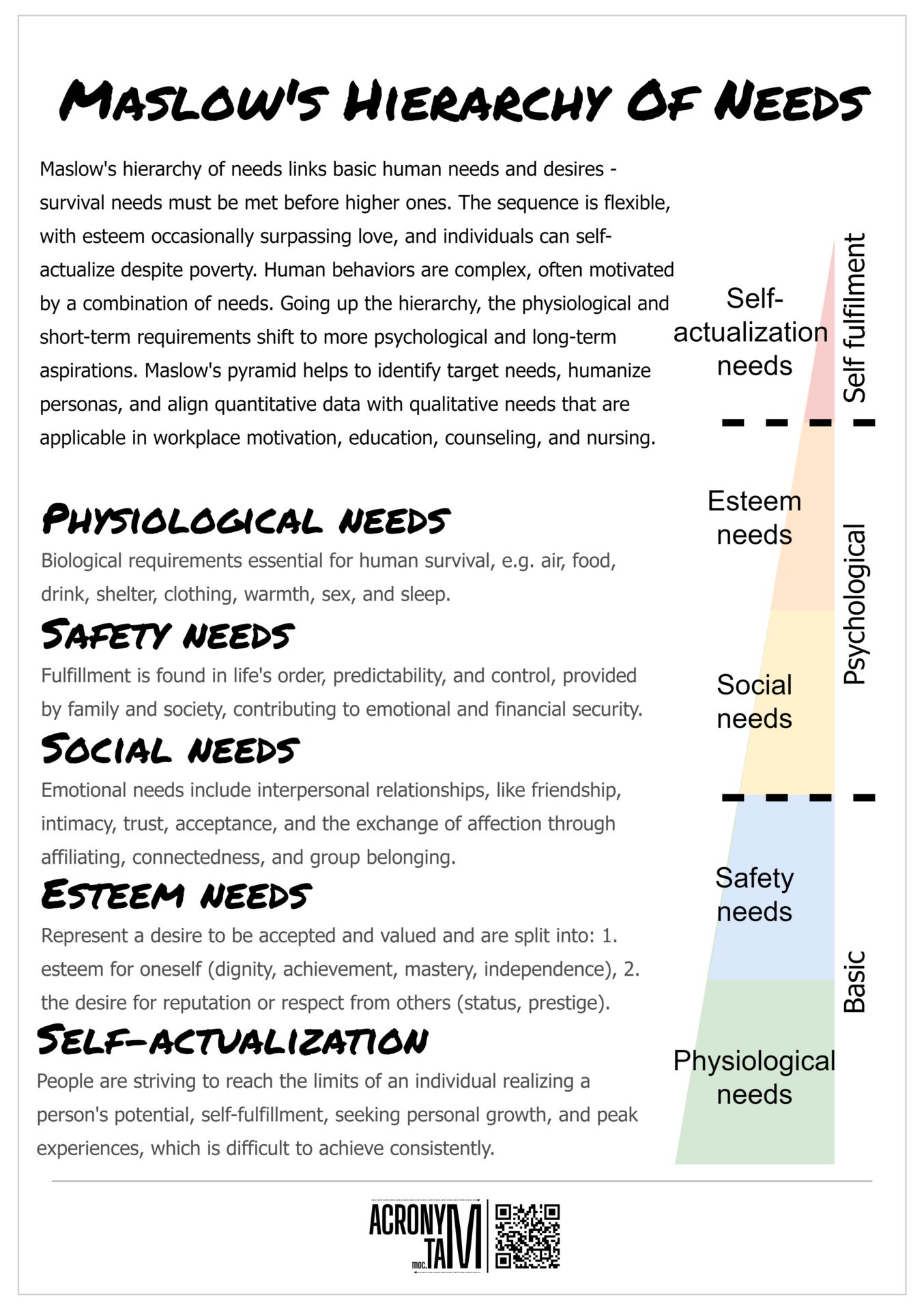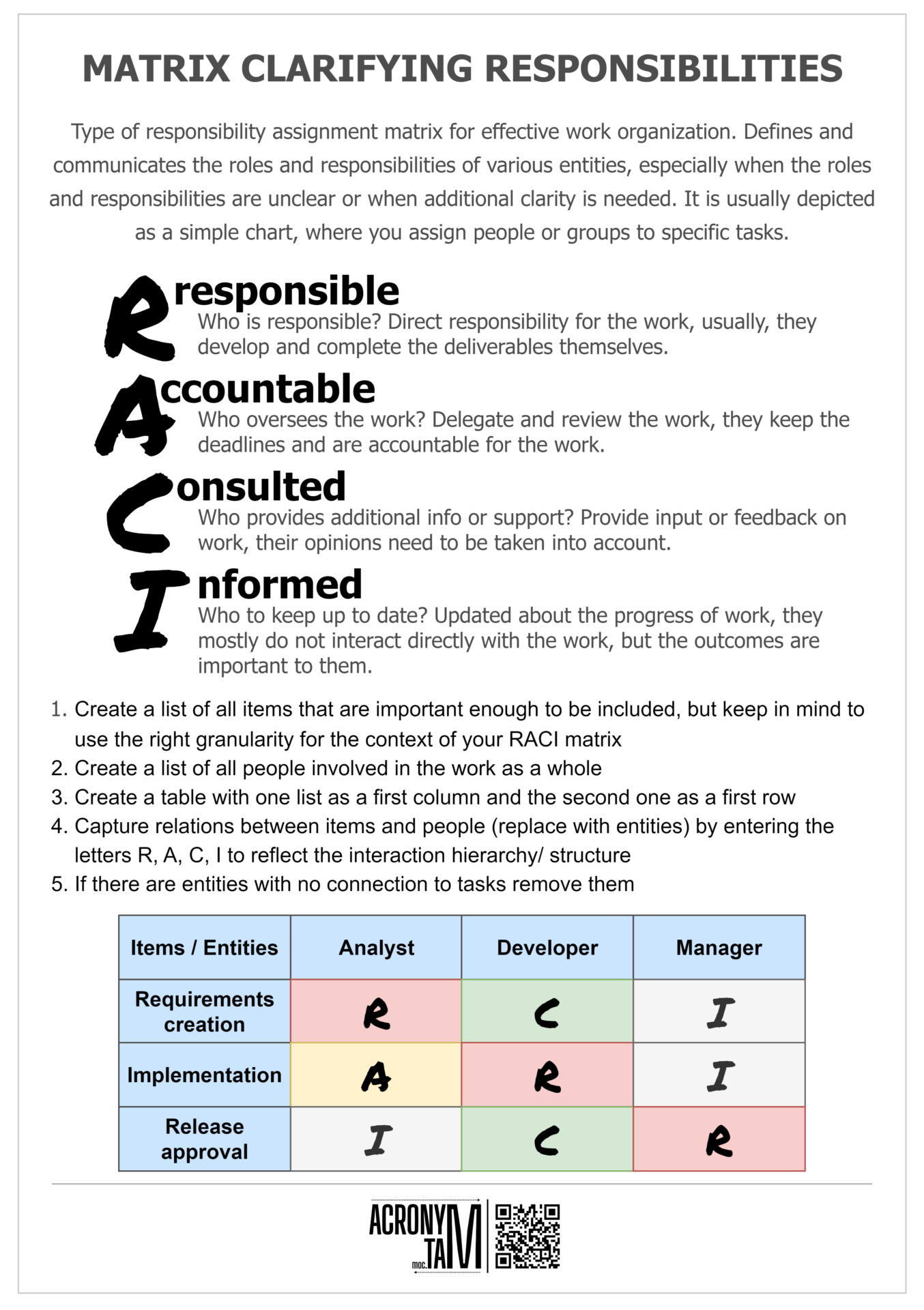Article
CALMS DevOps
CALMS is an expansion of CAMS and embodies the major DevOps principles. Culture, Automation, Lean, Measurement, Sharing are supposed to provide an environment where DevOps will thrive.
Culture
The DevOps Culture is focused on delivering high-quality service which satisfies its users. The organizations should create an environment that promotes continuous learning, experimentation, a product mindset, engineering, and quality.
Automation
Automating the routine to improve efficiency. Teams can focus on non-routine, variable tasks. Automation results in predictable and standardized outcomes.
Lean
In DevOps Lean promotes the smooth transition of work – the flow, by eliminating low-value activities and applying Lean principles. Promoting failure in order to improve continuously.
Measurement
Measurement is fundamental for constant value delivery and improvement. Integration and tracking of metrics and feedback on day to day basis helps to improve the process.
Sharing
Collaboration of development and operations and sharing is fundamental. DevOps requires constant interaction with regard to the people, processes, tools, projects, etc. Blameless culture is the culture of sharing.

